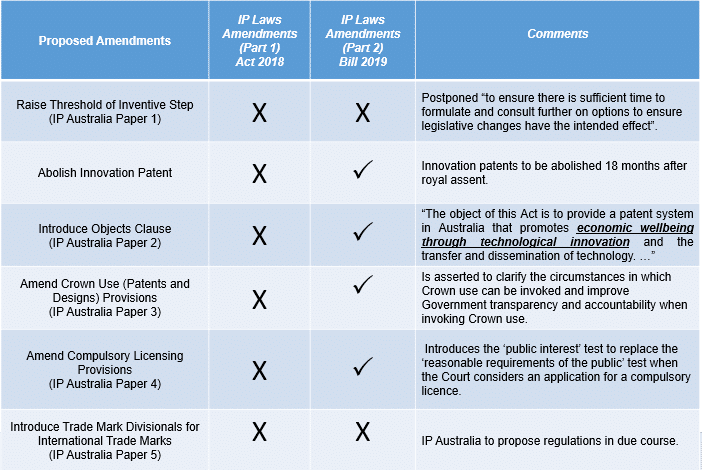The Intellectual Property Laws Amendment (Productivity Commission Response Part 2 and Other Measures) Bill 2019 clears the Senate and heads to the House of Reps
What is in the Bill?
While certain proposed changes to Australia’s intellectual property laws, which we outlined previously, have not been implemented, the Bill now making its way through Parliament is set to abolish the innovation patent system 18 months after assent. Accordingly, if the Bill passes in its current form, existing innovation patent rights would not be affected, but any further innovation patent applications could only be lodged if there is a date of patent and priority date prior to the commencement date.
The Bill also introduces an objects clause, which states:
“The object of this Act is to provide a patent system in Australia that promotes economic wellbeing through technological innovation and the transfer and dissemination of technology. In doing so, the patent system balances over time the interests of producers, owners and users of technology and the public.”
According to the accompanying Explanatory Memorandum, “ [t]he introduction of an objects clause will clarify the underlying purpose of the patent system and over time will reduce uncertainty in the operation of the Patents Act”. Only with time and the opinion of the Courts will we know if the stated purpose of “promot[ing] economic wellbeing through technological innovation” would be interpreted to restrict patentable subject matter.
What was left out of the Bill?
Of most interest to life sciences companies, the Australian Government has for now postponed increasing the threshold for inventive step. According to IP Australia, the delay in implementing changes in inventive step are to “ensure there is sufficient time to formulate and consult further on options to ensure legislative changes have the intended effect”. This postponement will also allow the full effect of the IP Laws Amendment (Raising the Bar) Act 2012, which substantially raised the threshold for support (enablement) and have only relatively recently begun to be applied and litigated.
There has also been no action on certain trade mark reform, specifically the introduction of divisional trademark applications for International introduction of divisional trade mark applications for International Registrations Designating Australia filed under the Madrid Protocol, despite IP Australia designating this as high-priority. IP Australia stated that they “will propose regulations for making in due course”.
Summary of Reforms: Where are we now?
In 2017, IP Australia published five papers outlining Intellectual Property Laws reform. A first round of amendments, Intellectual Property Laws Amendment (Productivity Commission Response Part 1 and Other Measures) Act 2018, primarily introduced amendments to the Plant Breeder’s Rights Act 1994 and amended the period to apply for removal of a trade mark for non-use.
The Bill was agreed to by the Senate but still needs to pass the House of Representatives. So, stay tuned!

